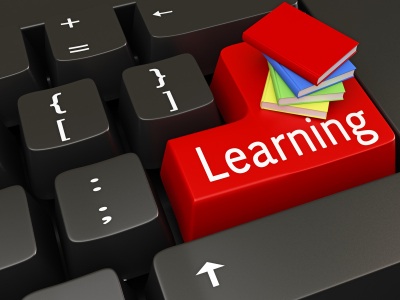TBVA/PIE powered by Edgenuity is excited to share that we still love Marzano’s work and his input about online learning. We share these views with Dr. Marzano.
Dr. Robert Marzano is a well-known educator that cofounded and is CEO of Marzano Research Laboratory (MRL). As 21st century learning and technology continue to combine, the MRL has set up strategies for implementing best online teaching practices.
Best Practice: Communicating course/assignment rules and procedures:
Strategies:
• Provide clear course policies and procedures at the beginning of the course/assignment.
• Provide clear information about the timeline for the course, including all assignments, assessments, and course activities.
• Provide clear information about methods of instructor-to-student communication and about all student course support resources.
• Ensure that all students have directions, resources, and a working understanding of how to navigate and successfully operate all student systems within the online learning environment prior to engagement with the course content.
Best Practice: Clearly presenting the goal/objective for each assignment
Strategy:
Provide or reinforce clearly stated course goals and learning objectives for each major concept within the course.
Best Practice: Providing students with all materials needed to complete an assignment
Strategies:
• Provide multiple learning resources with engaging and meaningful learning activities.
• Provide clear and complete instructions (how to proceed, assignment requirements, and assessment expectations) with rubrics for all activities. .
• Provide information about student course support resources.
Best Practice: Offering encouragement and positive feedback to students
Strategies:
• Begin interacting with students early in a course to affirm each student’s successful participation.
• Provide timely, supportive, individualized, and frequent feedback on student progress that emphasizes
the intended learning outcome.
• Analyze a student’s mastery level of standards content and provide additional instruction to help the student meet mastery level.
Best Practice: Allowing students to keep track of their learning progress
Strategies:
• Provide resources that allow students to self-monitor their academic progress throughout the course.
• Provide timely and meaningful feedback on assignments, assessments, and related course learning activities, allowing students to be continuously aware of their progress in the course.
Best Practice: Accessibility to students via electronic communication as well as face-to-face
Strategy:
Facilitate meaningful and timely communications (electronically and face to face).
Best Practice: Monitoring student work
Strategies:
• Closely monitor individual student data to guide instruction and provide intervention activities for unsuccessful learners.
• Identify and monitor course assessments that correlate to state high-stakes tests to assure mastery of those key concepts and provide additional learning experiences when needed.
Best Practice: Knowing every student by name and being able to recognize them outside of the online environment
Strategies:
• Communicate with each student prior to, or early in, a course to answer any questions and to build a
supportive instructor-to-student relationship.
• Provide a supportive and engaging learning community environment for all students.
Best Practice: Allowing students to progress through assignments at their own pace
Strategies:
• Ensure that the curriculum is at the correct level for students and has appropriate rigor.
• Provide multiple learning pathways based on student ability to achieve content mastery.
• Provide ample assessment styles throughout the course to monitor student mastery of content and provide remedial instruction when needed.
Best Practice: Providing help to understand and practice new knowledge
Strategies:
• Provide synchronous learning activities in large and small learning groups to support key concepts within the course content.
• Provide multiple opportunities for students to be actively engaged in content that includes meaningful and authentic learning experiences, such as collaborative learning groups, student-led review sessions, instructional games, analysis, discussions, case studies, etc.
• Provide a wide range of activities, assignments, assessments, and resources to allow students to demonstrate mastery of content.
• Provide high-level thinking and critical reasoning activities in increasing complexity throughout a course.
Best Practice: Allowing students to ask questions during online course/assignment
Strategies:
• Foster teacher-student and student-to-student interaction.
• Ensure students have accessibility through various communication methods.
Best Practice: Treating all students equally
Strategies:
• Provide multiple learning resources with engaging and meaningful learning activities to all students.
Best Practice: Adding external resources to assignments aligned to local objectives
Strategies:
•Adapt the course content to meet students’ needs by providing additional assignments, resources, and activities for remediation or enrichment during the course experience.
• Assure that course content, assignments, and assessments are of appropriate rigor and align to state standards.
• Augment, as needed, course content, learning activities, and assessments to meet all required standards within a course.




